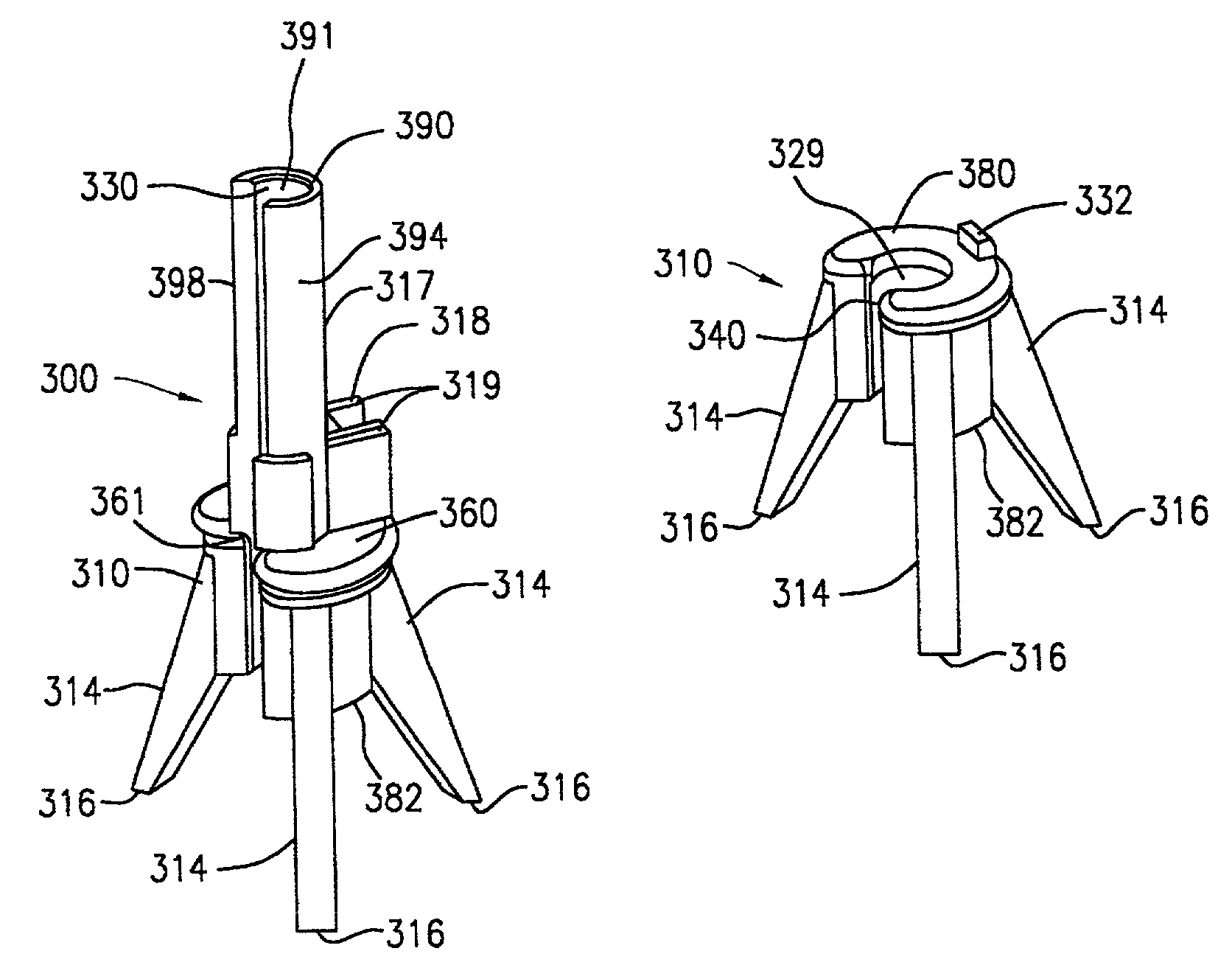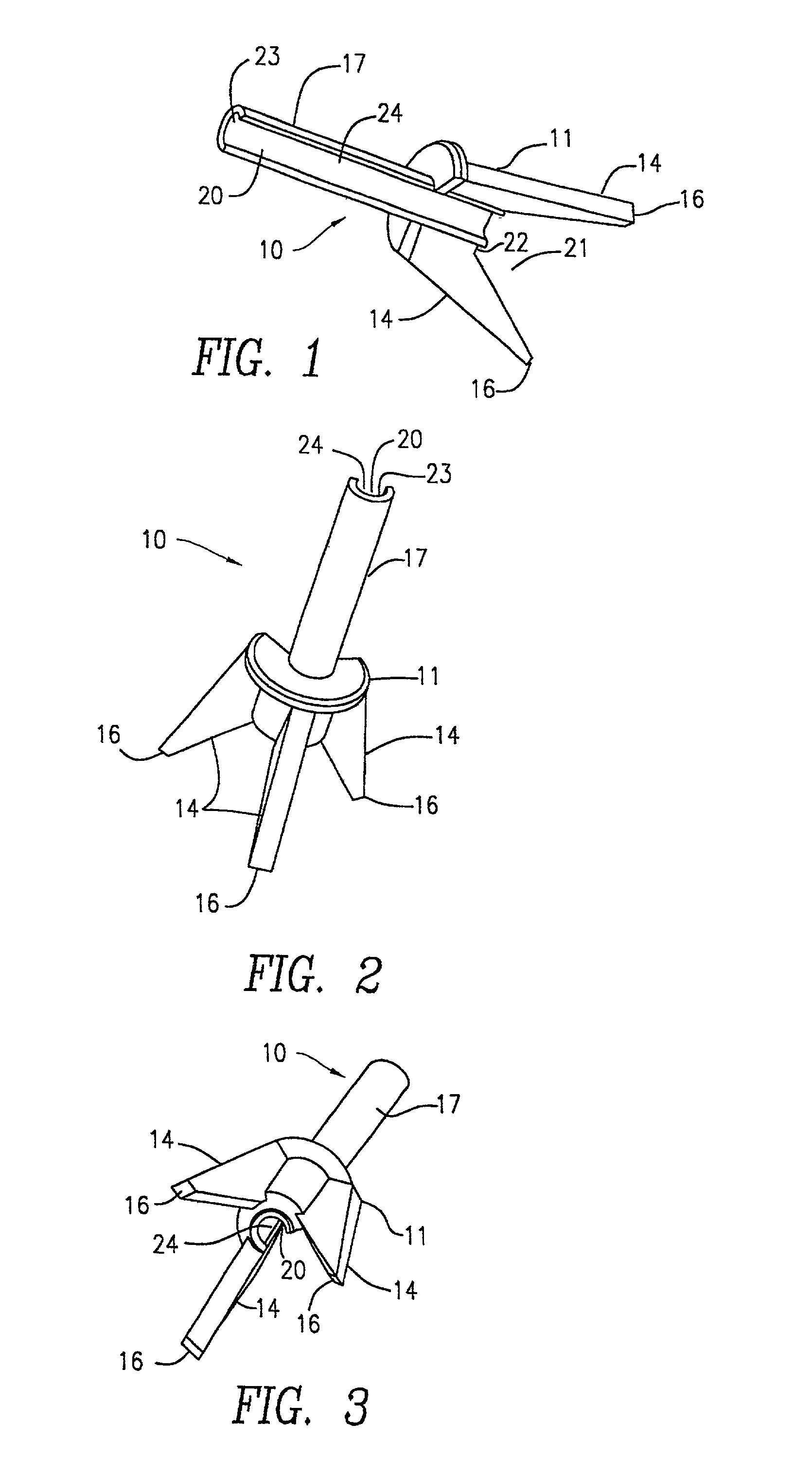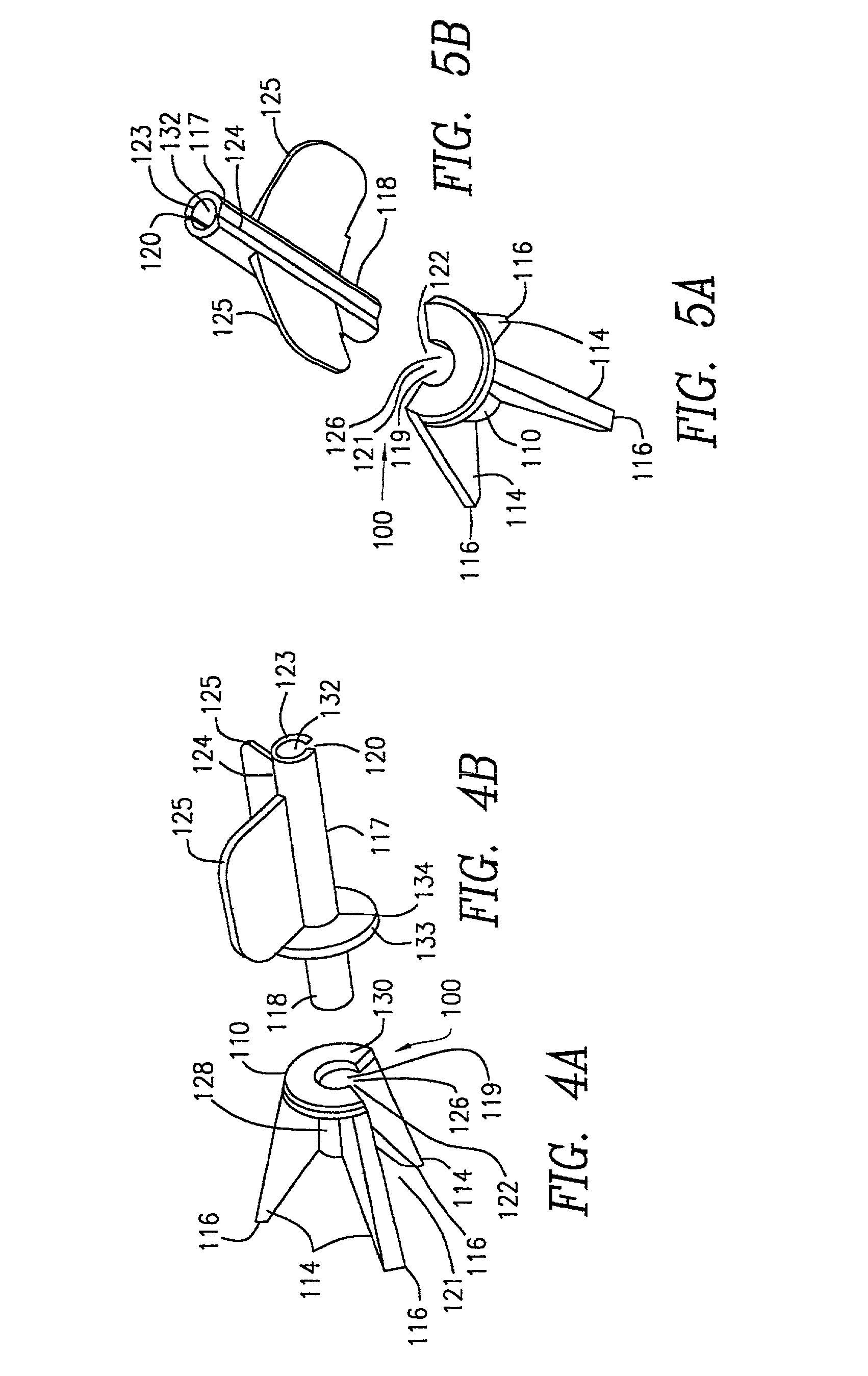Slotted catheter guide for perpendicular insertion into a cranium orifice
a catheter guide and perpendicular insertion technology, applied in the field of catheter guides, can solve the problems of catheter obstruction, difficult to cannulate for icp monitoring, and difficulty in patients' ventricles
- Summary
- Abstract
- Description
- Claims
- Application Information
AI Technical Summary
Benefits of technology
Problems solved by technology
Method used
Image
Examples
Embodiment Construction
[0050]Turning initially to FIGS. 1 through 3, there is illustrated an integrated catheter guide 10 for controlling the entry of a ventricular catheter (not shown) at a preferred angle of substantially 90 degrees into a burr hole through the cranium of a patient (not shown). The initial function of catheter guide 10 is to control the angle of entry of the catheter during its insertion into the perforation of the cranium, especially at the start of the catheterization procedure. Catheter guide 10 may be seated, for example, directly upon the scalp of the patient, above the bore hole.
[0051]Alternately, in the event a larger incision is made and catheter guide 10 is seated directly upon the surface of the skull, its legs spread apart the surrounding scalp tissue and prevent such tissue from being gathered or drawn to the burr hole during the catheterization procedure. Catheter guide 10 is thus preferably constructed of a rigid, non-deformable material such as a rigid engineering plastic...
PUM
 Login to View More
Login to View More Abstract
Description
Claims
Application Information
 Login to View More
Login to View More - R&D
- Intellectual Property
- Life Sciences
- Materials
- Tech Scout
- Unparalleled Data Quality
- Higher Quality Content
- 60% Fewer Hallucinations
Browse by: Latest US Patents, China's latest patents, Technical Efficacy Thesaurus, Application Domain, Technology Topic, Popular Technical Reports.
© 2025 PatSnap. All rights reserved.Legal|Privacy policy|Modern Slavery Act Transparency Statement|Sitemap|About US| Contact US: help@patsnap.com



